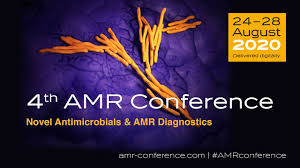
Those of you who joined the recent AMR conference, or who receive John Rex’s very useful emails or who follow his website AMR Solutions, will doubtlessly know that there have been recent advances in reimbursement programs in Europe for antibiotics. With all of the deepest respect for John and for Kevin Outterson in this regard, no one should believe that these tiny baby steps represent significant progress in the effort to fix the antibiotic marketplace.
 Germany, for example, recently allowed “reserve” antibiotics special exclusion from their general hospital diagnosis-related reimbursement so the antibiotics can be reimbursed at a higher level. John and Kevin explain that this is a reversal from their previous stance that required new antibiotics to be reimbursed at levels similar to generic drugs unless they had shown superiority in clinical trials – something that can occur only rarely for antibiotics. They point out that France also has a DRG carve-out for antibiotics and that the US is contemplating one in the form of the DISARM Act currently before Congress (as it has been for eons it seems). (Currently, the US has a partial carve-out available through their NTAP program that I’m not sure anyone uses). Kevin and John note that Sweden has announced which antibiotics will benefit from their pilot study of a subscription payment model similar to what is contemplated by the UK.
Germany, for example, recently allowed “reserve” antibiotics special exclusion from their general hospital diagnosis-related reimbursement so the antibiotics can be reimbursed at a higher level. John and Kevin explain that this is a reversal from their previous stance that required new antibiotics to be reimbursed at levels similar to generic drugs unless they had shown superiority in clinical trials – something that can occur only rarely for antibiotics. They point out that France also has a DRG carve-out for antibiotics and that the US is contemplating one in the form of the DISARM Act currently before Congress (as it has been for eons it seems). (Currently, the US has a partial carve-out available through their NTAP program that I’m not sure anyone uses). Kevin and John note that Sweden has announced which antibiotics will benefit from their pilot study of a subscription payment model similar to what is contemplated by the UK.
 Is this all good news? I pose this question to myself and to you my readers. Some of this seems like national health authorities are motivated to do something to correct the antibiotic market but don’t want to do more than their country’s “fair share.” This is similar to the DRIVE AB estimate of Europe’s “share” or “obligation” within the context of a global effort to provide a pull incentive for antibiotic R&D. But the major fallacy with all of these approaches is that there is no global effort to establish an appropriate pull incentive for antibiotic R&D. If the major economies of Europe, like Sweden and the UK, want to base a subscription model just on the need within their own population, we will ever get anywhere. Europe has to be Europe and provide for the needs of all its members from richest to poorest.
Is this all good news? I pose this question to myself and to you my readers. Some of this seems like national health authorities are motivated to do something to correct the antibiotic market but don’t want to do more than their country’s “fair share.” This is similar to the DRIVE AB estimate of Europe’s “share” or “obligation” within the context of a global effort to provide a pull incentive for antibiotic R&D. But the major fallacy with all of these approaches is that there is no global effort to establish an appropriate pull incentive for antibiotic R&D. If the major economies of Europe, like Sweden and the UK, want to base a subscription model just on the need within their own population, we will ever get anywhere. Europe has to be Europe and provide for the needs of all its members from richest to poorest.
And where does the US fit in all this? Nowhere! Even DISARM, that is so enthusiastically supported by almost every antibiotic biotech I know will not, in my humble opinion, be nearly enough of a pull incentive. It is just another baby step limited by the rather small population who require targeted or even empiric therapy with new antibiotics active against resistant pathogens.
DRG carve-outs and subscription models limited to today's needs of various national populations will not provide the kind of pull incentives we need unless all countries participate. To expect that they will is, at best, naïve and at worst, irresponsible.
These approaches are hamstrung by the population at risk for resistant infections today. We need an approach today that looks forward to tomorrow. None of these achieves that goal. We need incentives today that project our needs 10 years from now. We need to see this as an investment in the future, not a make-up payback for today.
The optimists see the glass as half full. I see a desert with no water in sight. The optimists say this is progress. We weren’t even contemplating DRG carve-outs and subscription models or any pull incentive 10 years ago, they say. True. Ten years ago, the US did not even have a clear path for the clinical development of needed new antibiotics because the FDA was lost. Ten years ago, we were all focused on the FDA.
So, you ask – what IS enough? We need a country or a region to take a leadership role and come up with a pull incentive for the world – for all of us. Otherwise, by the time a significant pull incentive comes from everyone’s desire to pay only their “fair share,” we will have lost most or all of the antibiotic companies that remain. We will be without protection when the resistance pandemic arrives.
Too little is not enough!



